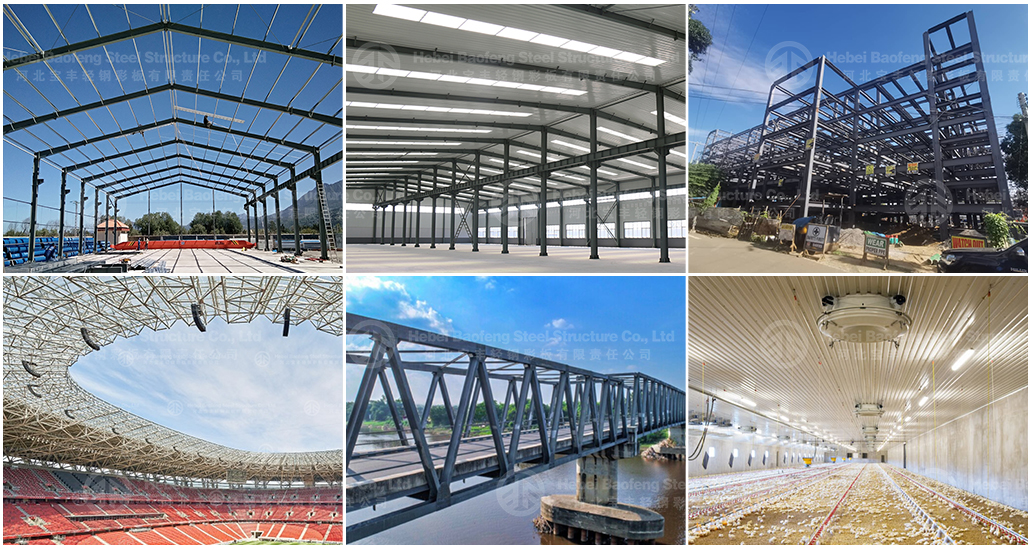
Why wind speeds are so important for steel structure building?
Wind speeds are critically important for steel structure buildings due to several key factors that influence safety, design, durability, and compliance with standards:
1.Aerodynamic Forces:
Wind exerts pressure on structures proportional to the square of its speed. Higher speeds drastically increase wind pressure, requiring robust structural design to resist uplift, bending, and shear forces.
2.Resonance and Vortex Shedding:
Wind can induce vibrations if its frequency aligns with the building’s natural frequency, leading to resonance. This phenomenon, exemplified by the Tacoma Narrows Bridge collapse (1940), causes catastrophic fatigue. Steel structures must be designed to disrupt vortex shedding (e.g., through aerodynamic shaping) to avoid dangerous oscillations.
3.Fatigue and Material Durability:
Repeated wind loading, even at moderate speeds, can cause cyclic stress. Over time, this may lead to metal fatigue, especially in welded joints or thin sections. Steel’s fatigue resistance must be evaluated during design.
4.Cladding and Secondary Elements:
High winds can damage windows, facades, or cladding, compromising the building’s envelope and increasing internal pressure. Secondary elements must be securely anchored to prevent progressive failure.
5.Building Codes and Safety Standards:
Codes (e.g., ASCE 7, Eurocode 1) mandate wind load calculations based on regional wind speeds (e.g., 50-year return period). Compliance ensures structures withstand expected extremes, with taller buildings requiring stricter designs due to higher exposure.
6.Economic Optimization:
Overdesigning for excessive wind speeds raises costs, while underdesigning risks failure. Accurate wind data and simulations (e.g., computational fluid dynamics) balance safety and economy.
7.Aerodynamic Shape:
Buildings with streamlined forms (e.g., tapered profiles, curved surfaces) reduce wind resistance. For example, the Burj Khalifa’s Y-shaped plan minimizes wind loads, lowering material costs.
8.Extreme Weather Resilience:
Hurricanes, tornadoes, and typhoons involve extreme wind speeds (over 150 mph). Steel structures in such regions require reinforced connections, bracing, and base isolation to prevent collapse.
9.Foundation and Connection Integrity:
Wind forces propagate through the structure, stressing foundations and connections. Proper anchorage and robust detailing (e.g., bolted vs. welded joints) are critical to prevent progressive failure.
10.Case Histories and Lessons Learned:
Historical failures (e.g., Tacoma Narrows, 1940) underscore the importance of wind engineering. Modern designs incorporate aerodynamic insights and advanced materials to mitigate risks.
In summary, wind speeds directly impact structural safety, material longevity, and economic viability. Ignoring them risks catastrophic failure, while thoughtful integration of aerodynamics, codes, and advanced engineering ensures resilience and efficiency.

Categories
latest blog
Tags